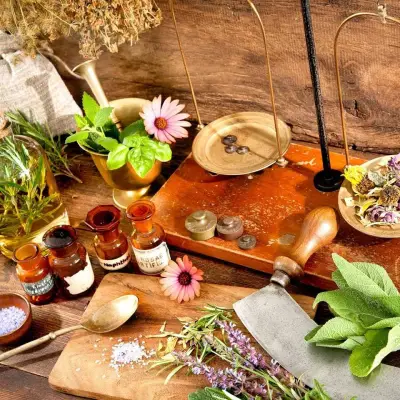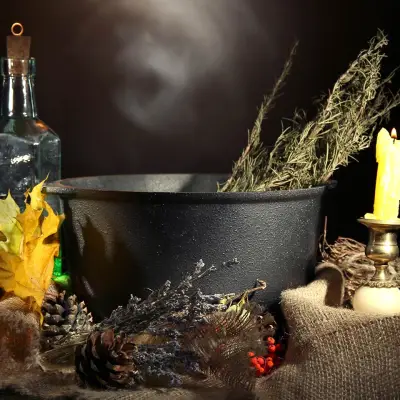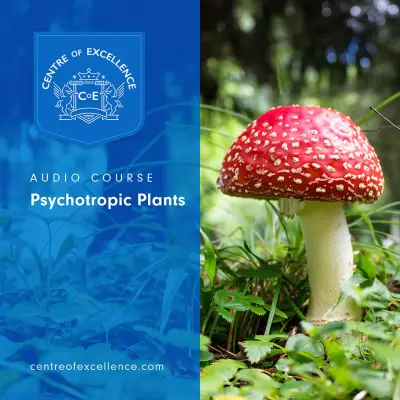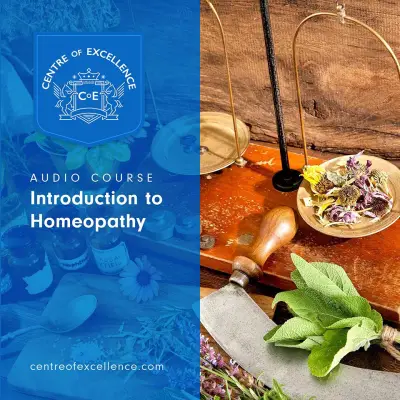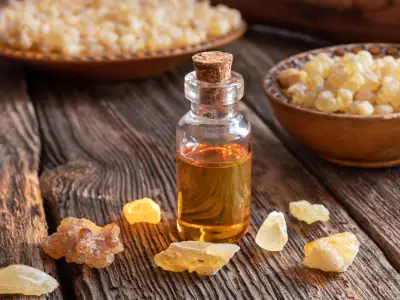Whether you're making fresh tomato sauce or adding mint to a pitcher of iced tea, herbs add unique flavours to meals and are more than just a plate garnish or a plant in a jar. Without herbs, our dishes would be bland, and we would also lose out on their medicinal benefits.
Buying fresh herbs in the store is expensive - they cost more per ounce than most vegetables and fruits - but you don't need a large backyard to grow fresh herbs. All you need is a container, water, and a sunny spot to put them in. You can have a constant supply of herbs by making your own indoor herb garden.
Jump to:
10 Herbs You Can Grow in Water
Creating an indoor herb garden is something you should try. You don't have to use soil and worry about soil amendments and daily watering isn't a task that you'll need to put on your to-do list. Plus, using fresh herbs will make your dishes taste that much better.
Recommended for you!
Best Sellers- Peppermint: Peppermint can be used to relieve headaches, kick a stomach ache, ease digestive problems, or to increase energy, and it also has a unique cooling sensation on your skin. Growing peppermint in water is easy - you just need to put it in some fresh water.
- Oregano: Oregano is a must-have for pasta sauces, dipping sauces, and a multitude of delicious recipes. Take a cutting from a fresh plant and put it in a pot in water.
- Rosemary: Every herb lover needs a rosemary plant. It can add flavour to artisan bread or help balance Italian flavours. Rosemary takes longer to grow roots, but Spring cuttings are a little quicker. Make sure it has plenty of sunlight.
- Basil: Nothing is better than fresh basil, and basil plants produce an abundance of leaves. You need to take cuttings before the plant starts to flower and give it plenty of warmth and sunlight when growing in water.
- Thyme: Anyone who cooks Italian food regularly needs a fresh thyme plant. Thyme is excellent in soup, stew, and pasta. Take a cutting from the new growth, which is green in colour. The best time to do this is in mid-spring or early Summer.
- Sage: Have you ever heard of burning sage to help purify your house? Sage may be able to cleanse away evil spirits, but it also packs a flavour punch when added to a fresh sausage. Take soft cuttings in Spring and put them in water to take root. Keep them in a brightly lit area and provide plenty of air circulation.
- Tarragon: Tarragon pairs well with protein-rich foods, such as chicken, fish, or lamb, and works particularly well in French cooking. You should take tarragon cuttings in the Spring once new growth begins. Autumn cuttings are acceptable, but it takes the cuttings longer to develop roots.
- Lemon Balm: Most people assume that lemon balm is mostly a medicinal herb, but it's also quite flavourful. You can use it as an antihistamine for bug bites or toss it in your fresh lemonade for a burst of flavour. Take the cuttings in Spring or Autumn and keep them in a warm place but away from direct sunlight. Expect it to take 3-4 weeks to develop roots.
- Lavender: Everyone knows lavender has relaxing and calming properties. You can use dried lavender in teas or herbal baths for this purpose. To make a cutting, remove the first three inches of the lavender stems. When removing the cuttings in Spring, wait at least 4-6 weeks to establish new roots before planting.
- Stevia: Stevia is a sweet plant that you can use to replace sugar. You can add leaves to freshly brewed teas and other dishes. Take stevia cuttings from actively growing soft branches and put them into water quickly. Stevia needs a warm place and ample sunlight to flourish.
How to Make Your Indoor Herb Garden
Growing herbs in water isn’t as strange as you might think and it's quite simple - here are the steps to making your own indoor herb garden:
- Find a ContainerFind a suitable container for your herbs. Glass jars work well, but whatever you select should be half the height of a lightbulb - to prevent the herbs from falling into the container. Roots prefer to grow away from light, as they're used to life underground. Coloured bottles, such as amber-coloured ones, are best. If you can't find coloured glass jars, wrap paper around the bottle to keep the roots in the dark.Narrow-mouthed containers are perfect because the narrowness of the rim helps to support the cuttings and keep them upright.
- Take Herbal ClippingsCut off part of the herb that you want to grow, making sure you have a stem that’s long enough for your container. It needs to be half-exposed in the jar. If the clippings are from a live plant, be sure to let it sit out for a day in a cool area.Soft cuttings will take root fast, so you won't need any rooting hormones. Take a six-inch section from your growing plant. Remove the lower leaves from the cuttings and trim the lower tips to where the roots will grow.
- Put the Clippings in the ContainerPut the clippings from the herbs in the container you picked and put the pot by a window that gets several hours of sunlight each day. They'll start to grow within a week or so, as the roots grow and begin to get fuller.
Using the Right Water
Using the right water makes a difference when growing herbs. Avoid using chlorinated water, because it has a bleaching chemical that might not be friendly to new herb tissue. You can use tap water, but you must leave this in a container overnight before adding your herbs. Stored rainwater is a great choice and ideal for the plants in your indoor herb garden!
The best choice is fresh spring water or well water. It contains dissolved minerals that can help your plants grow, but this isn’t readily available to most of us.
Feeding Water-Grown Plants
When you grow herbs in soil, the soil is your plant’s food. Plants growing in water absorb mineral nutrients faster, so you need to provide your indoor herb garden with supplementary nutrition. For this, you can dilute regular fertilisers in water.
To dilute fertiliser in water, first make sure you have a water-soluble fertiliser. Add one teaspoon to every gallon of water. If you want to make it stronger, you can add two teaspoons of fertiliser to each gallon. Stir the fertiliser with a spoon, until it’s fully dissolved.
Another choice is to purchase liquid fertiliser concentrate. Each bottle will tell you how to properly dilute the fertiliser. It’s easy to add too much, so pay attention to measurements.
Using regular fertilisers with water-grown plants can leave a residue that accumulates in the water and can lead to root burn. So, make sure you change the water regularly.
In general, you should use a quality fertiliser every time you change the water – roughly every four to six weeks. If you notice half of the water has evaporated, you can change the water sooner. Also, when your plants look weak, try misting the leaves with a fertiliser solution.
Creating an indoor herb garden by growing herbs in water is easy, and everyone can do it. Even if you don’t have a yard or a patio, you can have fresh herbs available to spice up your dinner dishes or to add to herbal teas when you have a headache. Plus, a constant supply of fresh herbs will save you money, and everyone loves to save money.
Recommended for you!
Best SellersStudy Master Herbalism for £29
If you're interested in learning more about the art of herby growing, consider enrolling in the
Master Herbalist Diploma Course at Centre of Excellence. For a limited time, you can access this fascinating course for a discounted price of £29.


